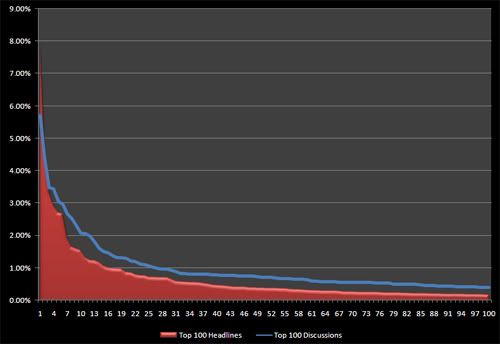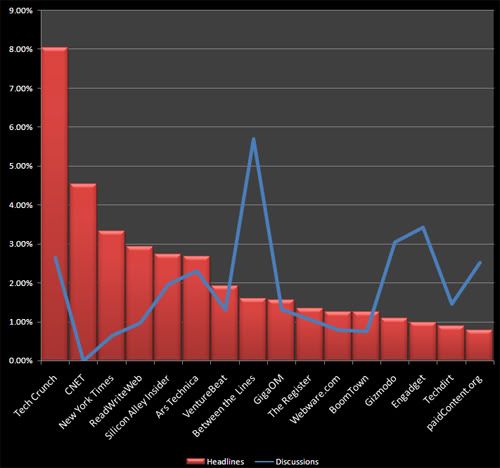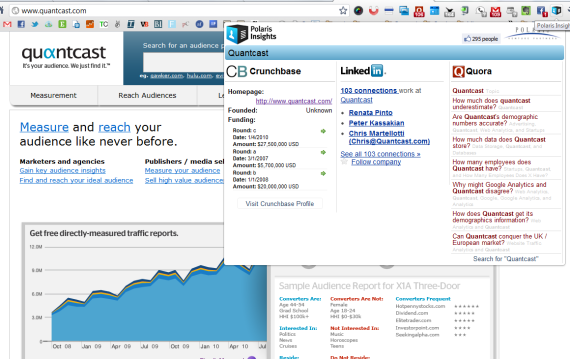Techmeme has garnered a great deal of analysis over the past week: Statbot broke down the top 100 users, CrunchBase released a very thorough Blogger Board, and I argued that Techmeme's homepage is more effective and valuable than Digg's or Mixx's.
Below, I combined StatBot's Top 100 Discussion sources and CrunchBase's Top 100 Headline sources. I was looking to understand two things:
1) Techmeme's reliance on top sources in both Discussions and Headlines
2) The overlap between top Discussion and Headlines sources

The heads actually take far different shapes - which is to be expected. 17 different sources contribute at least 1% of Techmeme's headlines meanwhile, 28 sources contribute at least 1% of Techmeme's discussions. The fascinating part is that 25% of Techmeme's sources and 23% of its discussions are from 6 sources, respectively:
- Headlines: TechCrunch (8%), CNet (4.5%), NYTimes (3.3%), ReadWriteWeb (2.9%), Alley Insider (2.7%), Ars Technica (2.7%)
- Discussions: ZDNet (5.7%), Digg (4.4%), Wired (3.5%), Mashable (3.4%), Engadget (3.1%), Gizmodo (2.9%)
The less pronounced (ie flatter) chart for Discussions is predictable as it is far easier for an 'average' blogger to make Techmeme's Discussion Algorithm... it's far harder to qualify as a Headline because Techmeme's algorithm values a mixture of credibility, linking, news breaking, etc. Consequently, the Discussion tail is more distributed and the Headlines 'head' features very big names.

Equally interesting is the overlap (or lack thereof) between top Discussion and top Headline sources. For instance, there are less than 10 sources that represent at least 1% of Techmeme's discussions and 1% of their sources. Why?
- As mentioned above, Techmeme's Headline algorithm values prominent, news-breaking sources (like TechCrunch, NYTimes, CNet, AP, WSJ)
- Big sources like those are less likely to 'discuss' topics (ie respond) because either they are breaking the news or because it is not likely that major news sources engage in blog-like responses and linking
In fact, of the 17 Headline sources with at least 1% 'presence', seven are major companies / news sources (like WSJ, AP) and the remainder are major blog brands (TechCrunch, GigaOm, Venture Beat, Alley Insider). Only three sites have at least a 2% presence on both Headlines and Discussion: TechCrunch, Ars Technica, and Alley Insider.







